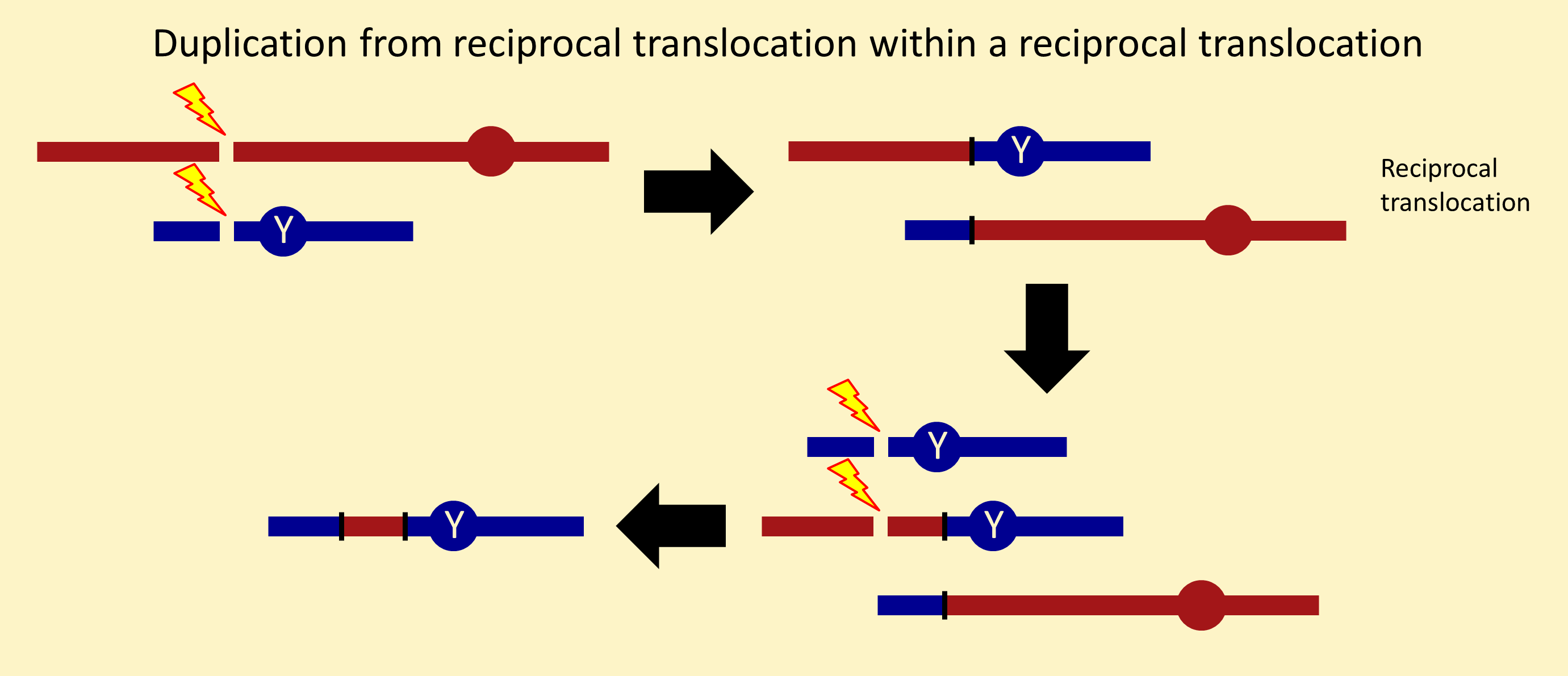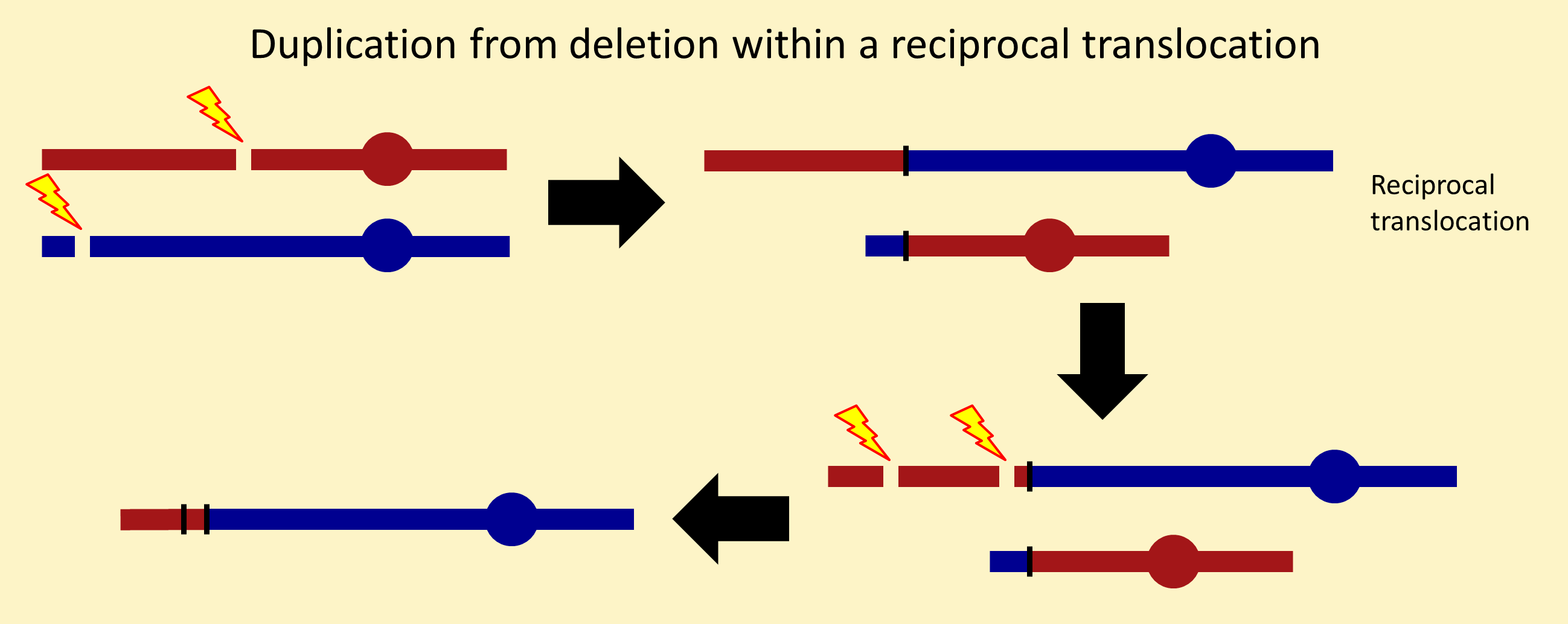Conceptually, the most straightforward method for making a duplication is transposition, where three chromosome breakpoints allow the movement of a segment to a new insertion site.

It is important to note that a transposition (Tp) is composed of a pair of chromosomes: a deletion (Df) and a duplication (Dp). The deletion and duplication chromosomes can be inherited separately, but progeny inheriting only one of these chromosomes often die from excessive aneuploidy. Transpositions are recognized in screens from one of the breakpoints disrupting a gene, from viable progeny always inheriting the Df and Dp chromosomes together (pseudolinkage), or both.
Dp and Tp symbols indicate the direction the duplicated segment moved. In a Tp(3;2) or Dp(3;2), a third chromosome segment is inserted in the second chromosome. In a Tp(2;3) or Dp(2;3), a second chromosome segment is inserted in the third chromosome.
Because transpositions are relatively rare events, geneticists have devised other methods for recovering interchromosomal duplications.











